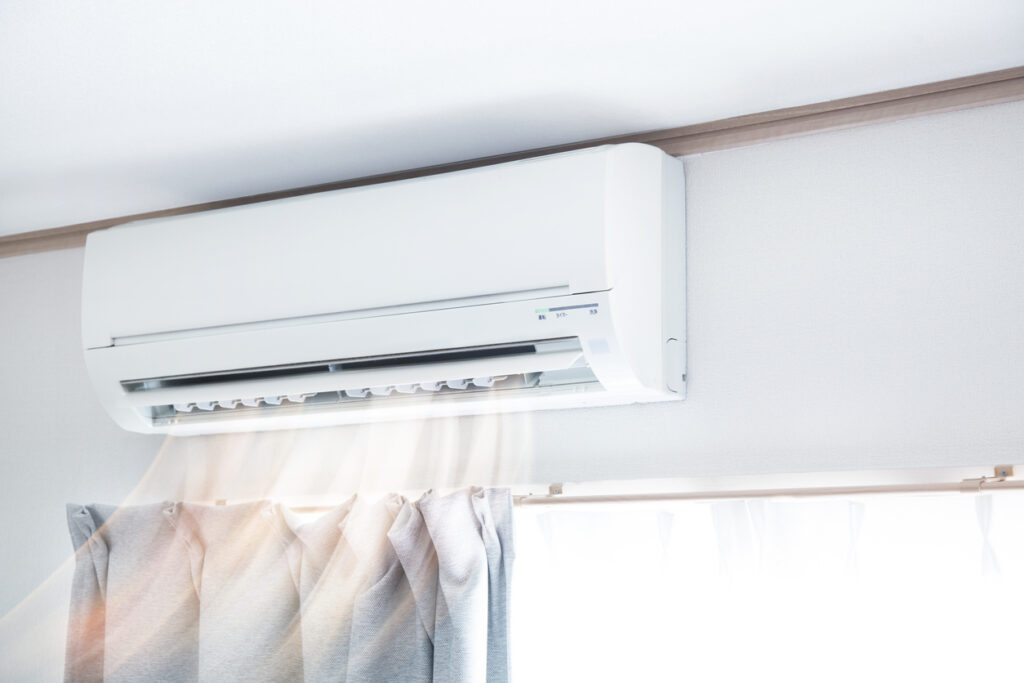When it comes to heating and cooling your home efficiently, mini split systems have become an increasingly popular option. But homeowners often wonder: Are mini splits worth it? The answer depends on your home’s layout, your comfort needs, and your priorities for energy savings.
In this post, we’ll break down what mini splits are, how they work, and why they might—or might not—be the right choice for you. By the end, you’ll have a clear understanding of whether a mini split system makes sense for your home.
What Is a Mini Split System?
A mini split, also called a ductless mini split, is a type of heating and cooling system that doesn’t rely on traditional ductwork. Instead, it has two main components:
- A single compressor unit that sits outside
- Air-handling units that are mounted inside on walls, floors, or ceilings of individual rooms/spaces
These components are connected by a small conduit that contains refrigerant lines, power cables, and a drain line. Each indoor unit can be controlled independently, giving you room-by-room temperature control.
Why Are Mini Splits So Popular?
Mini splits have seen a surge in popularity over the last decade, and it’s easy to see why. Many homes, particularly older ones or additions without ductwork, can’t easily accommodate central heating and cooling systems. Mini splits provide a flexible, efficient alternative.
They’re also a great solution for homeowners who want to zone their heating and cooling—keeping some rooms cooler or warmer than others without wasting energy on unused spaces.
But just because something is popular doesn’t always mean it’s the best choice for you. Let’s look closer at the benefits and drawbacks.
Benefits of Mini Splits
One of the biggest advantages of mini splits is their energy efficiency. Because they don’t rely on ducts, there’s no energy loss through leaky ductwork—which the U.S. Department of Energy estimates can account for up to 30% of energy use in a central system.
Mini splits also allow you to condition only the rooms you’re using. If you spend most of your time in a living room and bedroom, you can keep those comfortable without heating or cooling the rest of the house unnecessarily.
Here are some other reasons homeowners choose mini split systems:
Zoning Flexibility: Customize the temperature in each room or zone independently.
Quiet Operation: Mini splits are much quieter than window units or baseboard heaters.
Improved Air Quality: Many models include multi-stage filtration to reduce dust, allergens, and other particles.
Easy Installation: Without the need for ductwork, mini splits are less invasive and can be installed faster than a full central HVAC system.
Both Heating and Cooling: Most mini splits are heat pumps, meaning they can both heat and cool your home efficiently.
Potential Drawbacks of Mini Splits
While mini splits offer a lot of advantages, they aren’t always the ideal solution for every homeowner.
One potential downside is upfront cost. A mini split system can cost more than simply replacing a central system if ductwork is already in place. However, this higher upfront cost is often offset by lower energy bills over time.
Some homeowners also find the look of indoor units less appealing. Unlike central systems, which are virtually invisible, mini splits require visible wall or ceiling-mounted units.
And while they’re generally easy to maintain, each indoor unit has its own filter that needs to be cleaned regularly to keep the system operating efficiently.
Are Mini Splits Worth It for Your Home?
So, back to the main question: are mini splits worth it?
In most cases, mini splits are an excellent investment, especially if:
- Your home doesn’t have ductwork.
- You want to heat and cool an addition, sunroom, or garage.
- You’re looking to improve energy efficiency and lower utility bills.
- You want more control over the temperature in different rooms.
They’re particularly attractive for older homes, where installing ductwork would be impractical or damaging to the structure. And for families who value customizable comfort—keeping bedrooms cooler at night while saving energy elsewhere—mini splits are hard to beat.
That said, if your home already has a well-functioning duct system, upgrading to a more efficient central system might be more cost-effective in the short term.
How to Decide
The best way to determine if a mini split system is right for you is to consult with an experienced HVAC professional. At MSCO Heating & Cooling, we’ve been helping homeowners in Virginia Beach and the surrounding areas make smart heating and cooling choices for nearly 70 years.
We can assess your home, listen to your comfort preferences, and recommend the most efficient and cost-effective solution—whether that’s a mini split, a central system, or something else entirely.
The Bottom Line
Mini splits offer impressive benefits for many homeowners: high efficiency, precise control, and flexibility where traditional systems fall short. While they aren’t perfect for every situation, they’re well worth considering—especially if you want to eliminate ductwork losses or condition specific areas of your home.
If you’ve been wondering if mini splits are worth it, the answer is very often yes—provided they’re installed and maintained by a trusted mini split professional.
Get Expert Advice from MSCO Heating & Cooling
If you’re ready to explore your options, let MSCO Heating & Cooling help you find the perfect mini split solution for your home. Our experienced, TRANE-certified technicians will walk you through your choices and ensure your system is sized, installed, and maintained properly for years of comfort and savings.
Call us today—and discover if a mini split is the right fit for your home.




